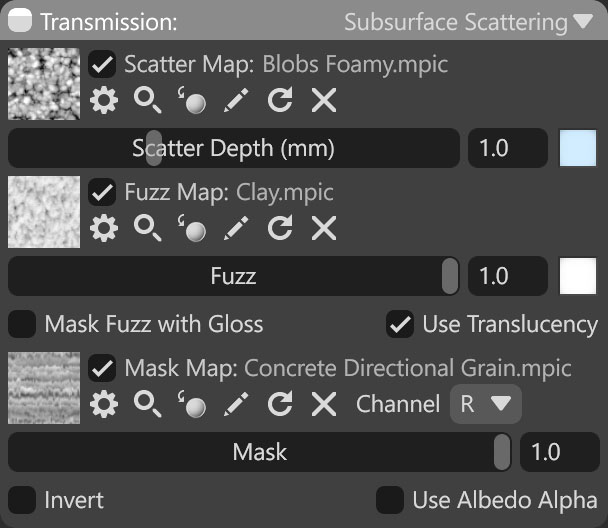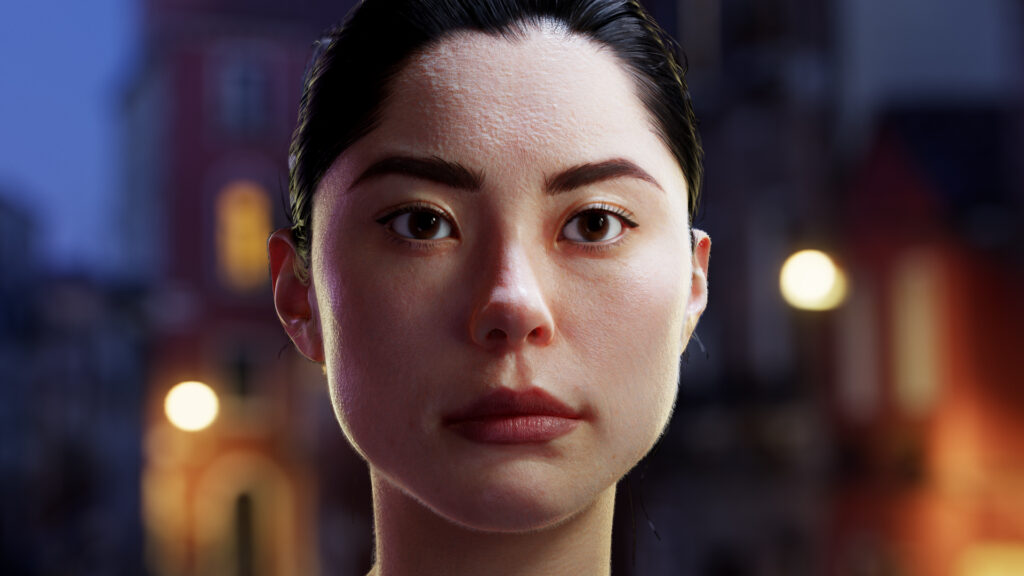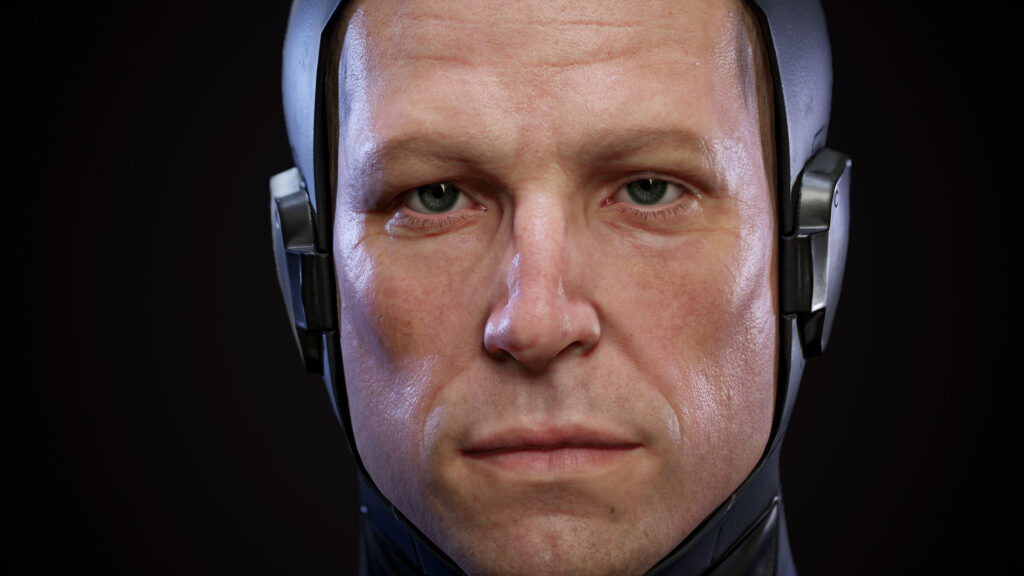Subsurface Scattering (SSS) simulates how light penetrates a translucent material, scatters inside it, and exits at different points. This creates a soft, glowing effect seen in materials such as skin, wax, marble, and leaves. Use cases include:
- Organic materials: skin, flesh, leaves.
- Semi-translucent surfaces: wax, jade, marble.
- Fuzzy or fibrous materials: moss, fabric, velvet.
This shading model can use three texture maps:
- Scatter Map (RGB): Defines how light scatters within the material, influencing translucency and internal diffusion. You can paint this map using a Texture Project in Toolbag, or create it using third-party apps.
- Fuzz Map (Grayscale): Controls the intensity and softness of a view-dependent fuzz highlight, useful for materials like moss, fur, velvet, or skin with fine hair.
- Mask Map (Grayscale): Determines which areas scatter light (white) and which remain opaque (black), allowing selective SSS.
Note: Check your scene scale if the Scatter Depth slider doesn’t result in significant changes. You can show the Scale Reference guide in the per-Viewport options (gear icon in each VP). To adjust the scale globally, go to Scene and adjust the Imported Units. If your 3D app is set up to model in CM, setting Imported Units to CM usually resolves the issue.

| Setting | Description |
|---|---|
| Scatter Map Texture Slot | Add a scattering texture by clicking on the slot or dragging and dropping one from the Library. |
| Scatter Depth (mm) | Specifies the distance light will scatter in this material. This value is specified in millimeters using accurate scene scale is advised. |
| Scatter Color | Determines the scatter color. |
| Fuzz Map Texture Slot | Add a fuzz texture by clicking on the slot or dragging and dropping one from the Library. |
| Fuzz Value | Controls the strength of the “fuzz” effect, which approximates the appearance of fine hairs. |
| Fuzz Color | Determines the color of the fuzz effect. |
| Mask Fuzz With Gloss | Masks the fuzz appearance with the material gloss value. |
| Use Translucency | Enables the use of a translucency approximation. Disabling this setting is sometimes useful to avoid artifacts in raster renders. This setting does not affect ray-traced images. |
| Mask Map Texture Slot | Add a mask texture by clicking on the slot or dragging and dropping one from the Library. |
| Channel Selection | Determines which channel of the texture map will be used. It’s useful when, instead of using multiple single textures, you use one texture with different grayscale maps in the different texture channels: Red, Green, Blue, and Alpha. |
| Mask Value | Sets the mask value that determines the strength of transmission. This value should be set to 1 when a mask map is loaded. |
| Invert | Inverts the mask value so that darker pixels correspond to stronger transmission. |
| Use Albedo Alpha | Uses the material’s albedo alpha value to provide a transmission mask. |




